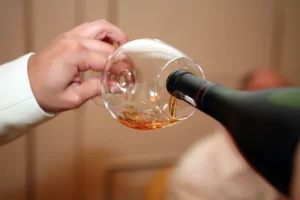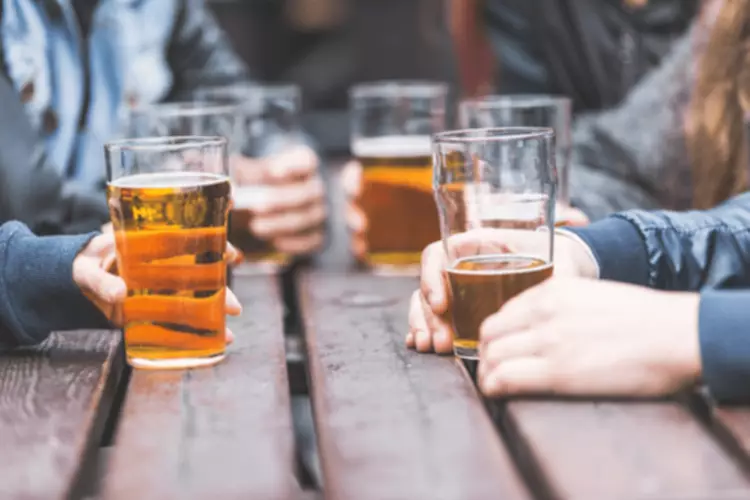
If you’re concerned that you or someone you know is drinking too much alcohol, Georgetown Behavioral Hospital near Cincinnati, Ohio can help. Our accredited mental health facility offers numerous therapeutic methods in an inpatient setting to address mental illness and substance abuse. Contact Zinnia Health today to learn more about our alcohol addiction treatment programs. We offer various services, including alcohol rehab, detox, individual therapy, and group counseling. We also have many resources available to help you through every step of the recovery process. Treatment for rhinophyma can vary depending on the severity of the condition.
Rhinophyma, Rosacea, And Alcohol Consumption
As the disorder progresses, the nose becomes larger, red, bumpy, and bulbous in shape. This visual change can significantly impact an individual’s self-image and confidence. Medication is not always enough to control rhinophyma once it has developed. Many times, it can be stubborn and require something stronger, in this case surgery. However, if a case of rhinophyma is less severe, some of the treatments we discussed for rosacea may be used. However, it’s always important to keep in mind that rhinophyma ultimately manifests itself as a side effect of rosacea.
- Surgical treatment can remove tissue overgrowth, reshape disfigured noses, and minimize the appearance of enlarged blood vessels.
- It causes irregular redness or flushing of your face, particularly in the cheeks or nasal areas.
- Depending on the severity of a person’s addiction, this can require professional intervention and help in the form of drug and alcohol rehab.
- The condition occurs equally in people who drink alcohol and people who do not.
- According to older research, cited in a 2023 article, rhinophyma begins as “pre-rosacea,” and the only symptom at this stage is facial flushing.
- Contact Zinnia Health today to learn more about our alcohol addiction treatment programs.
- If you or a loved one are in search of treatment services for alcohol use disorder, help is available.
Surgical Treatments
Alcohol misuse and addiction can contribute to changes in a person’s appearance. It can be if people have other conditions, such as rosacea or rhinophyma. If you already have rosacea or rhinophyma, drinking can make them worse and affect the appearance of the nose. Excessive drinking can lead to many problems, including liver disease, and can impact your appearance. However, the term alcoholic nose is not a medically-recognized condition.
Understanding Alcoholic Nose (Rhinophyma) and Its Relationship With Alcohol Consumption

Notably, it should not be assumed that someone with this condition suffers from alcohol use disorder. Rhinophyma is the medical term for “ alcoholic nose”, or “drinker’s nose.” This is a skin disorder commonly identified by a red, misshapen, bumpy nose. Due to the symptoms of rhinophyma, people often believed this condition was caused by alcoholism. Rhinophyma is a skin condition that causes a large red, bulbous nose. It’s a severe form of rosacea, a chronic skin condition that causes redness and bumps on the face. Treatment is important because rhinophyma can cause breathing trouble when the airways become blocked.


In the early stages, treatments involves medications, but in the advanced stages, it involves surgery. Once acne rosacea progresses to rhinophyma, the skin covering the nose increases in size and the tip of the nose expands. Rhinophyma is a skin disorder that causes the nose to become enlarged. Some other symptoms include lumpy, thickened skin and broken blood vessels. Alcohol use disorder and skin conditions like rosacea are connected because of the potential for alcohol to worsen existing skin conditions. In less severe cases, medication may be effective in treating rhinophyma.
Causes of rhinophyma or “alcoholic nose”

What Is Rosacea and How Is it Related To Rhinophyma?
- While it may contribute to rhinophyma or “drinker’s nose,” it probably doesn’t cause it.
- He was known for his large, bulbous nose and his connection with alcohol.
- The term “alcoholic nose” has an interesting history and an even more interesting scientific explanation.
- Genetic predisposition may also play a role in the development of rhinophyma.
- When the capillaries on the surface of the nose break they can then appear purple.


Recent Comments